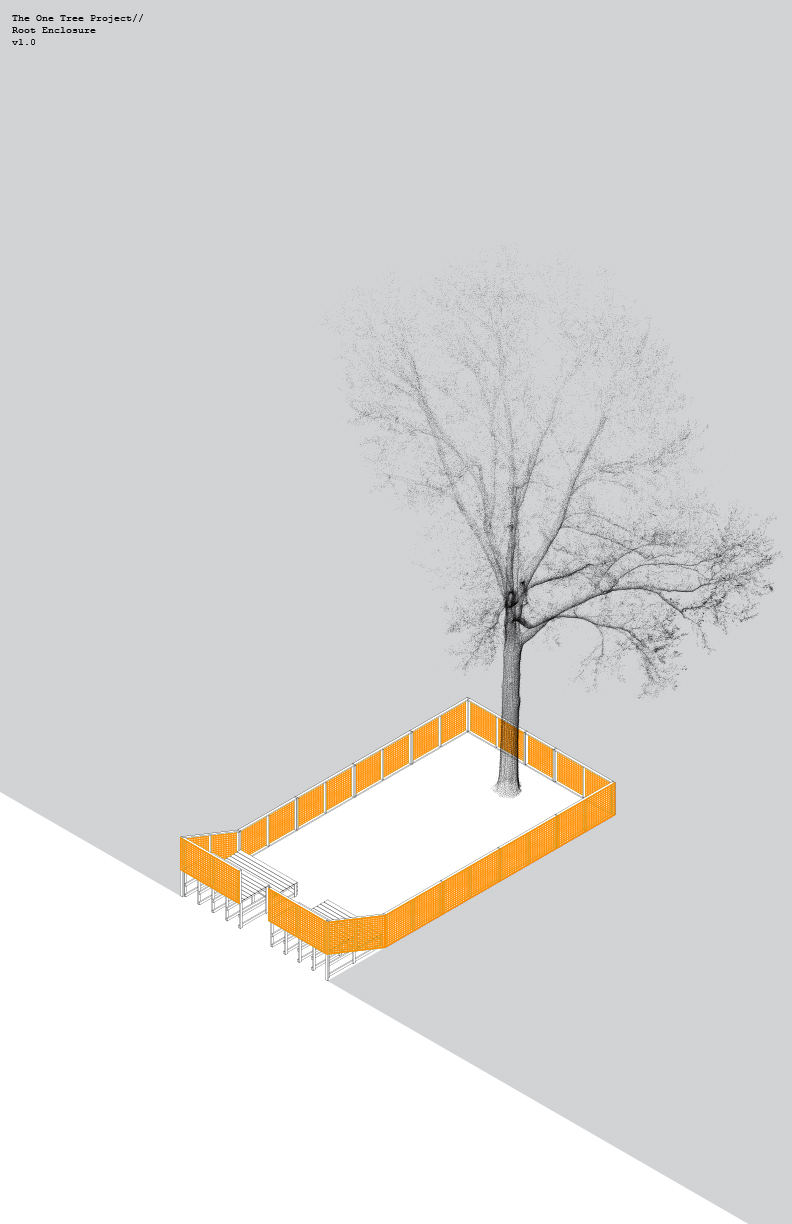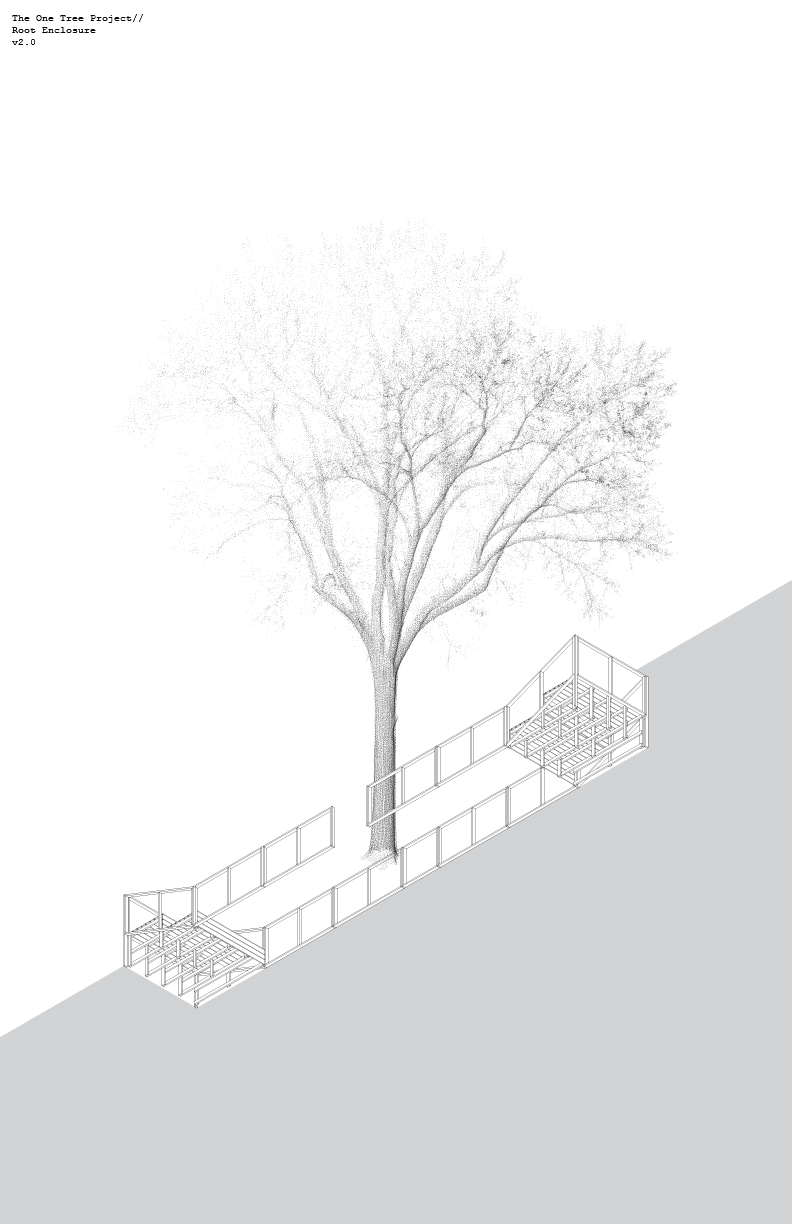The One Tree Project
Graduate Landscape Architecture Studio
Washington University in St. Louis
Instructor: Jesse Vogler
Collaborators: Alisa Blatter, Yuting Ji, Shu Guo, Margot Shafran, and Scott Mitchell
Awarded the 2017 Student Project of Excellence by ASLA St. Louis
www.theonetreeproject.org
This interdisciplinary Landscape Architecture design studio uses the imminent destruction of a central oak allee on the Washington University campus as a catalyst for a project-based investigation of our landscape and resource legacy. In an effort to offer a window into the greater meaning of trees in our urban ecosystem and culture, an understanding of one tree quickly gives way to an understanding of the community of trees; intensely interconnected organisms that require a range of mutualist associations. Throughout the studio we consistently interrogate the ways that our landscape imaginaries might be tuned to embrace this arboreal collectivity. Using the allee as a laboratory we ask questions of the trees, of their context, and of ourselves through a series of both collective and individual projects.
Constructed in response to our root archeology dig site, our first tree enclosure [below] is conceived as a protective barrier between the root excavation and the larger Brookings Allée - a space of entry to the campus. The enclosure takes is materiality (dimensional lumber, orange fencing) and component dimensions from barriers typical to construction sites. However, we altered the inaccessible enclosure by creating a central entry void, and bleacher seating. Through the misuse of this typical construction barrier that would normally serve to exclude others, we were able to more successfully invite those passing by into our dig site and converse with them about this historic space and its imminent transformation. With this intervention we were able to invite an audience into an otherwise quiet project.




The second iteration of our enclosure came in response to the demise of the first one. Unlike the first, this enclosure is not situated in the Brookings Allée. Instead it sits parallel to Forsyth Ave. in front of the Arts School. No longer is the enclosure intended for root watching, now it is a place to be with a tree. Nothing more, but the result was more powerful than we could have expected. We disassembled the first enclosure and reorganized the various pieces as a long and narrow space. This space is contemplative, unusual, freeing, yet secure. A place open to all who pass-by. Collaborations with various student groups and studios in the design school resulted in film screenings, lectures, and beer tastings all happening in concert with the tree.




As the studio progressed, my individual projects and thinking were shaped by the notion of "tree-time," a response to the question: Are trees aware of us? And if they are, how do they respond to our activities, our movements, and even just our presence? Trees are slow, silent, and stationary. We, on the other hand, are relatively fast, noisy, and moving. Perhaps in order to understand how a tree responds to our presence we have to slow down to tree-time. We don’t sense a tree’s response to our presence because we aren’t tuned to it. Likewise it’s probable that we are blurred shadows in the tree’s "speed of perception." In the same way that we as humans can’t discern the nuanced melodies of various birds since they operate in a faster time than us, we operate in a faster time than trees. A simple device that situates a human body in various positions with a tree attempts to reconcile tree-time and human-time in order to better understand one another.
Another attempt at understanding and reconciling tree-time and human-time was through listening intently to the sounds trees make. This tree listening progressed through various iterations of inserting piezo-electric contact microphones into and onto trees, and recording the sounds. My efforts culminated in a "tree-quartet" which imagines four trees roughly situated at four corners of a piece of the allee as receivers, transmitters, conduits for sound. The trees listen, they perform, they are performed by people, wind, birds. Each tree is equipped with a contact microphone and a guitar amplifier situated to create a space which gathers the four trees and begins to depict the soundscape of the trees as individual attentive bodies and the allee as a collective array of receiving antennae.
Days ahead of the felling of all 43 trees of the allee, our studio organized the ceremonial, critical lifting of one tree from the ground. This was the tree that our first enclosure framed, and the removal of this tree in such a way highlighted the resiliency, age, extensiveness of these giant organisms. Rather than simply cutting through the trunk in as efficient way as possible, removing a tree this way is no trivial, nor easy task. In the end, the tree prevailed as the roots had to be severed in order for it to release its grip on the earth.























